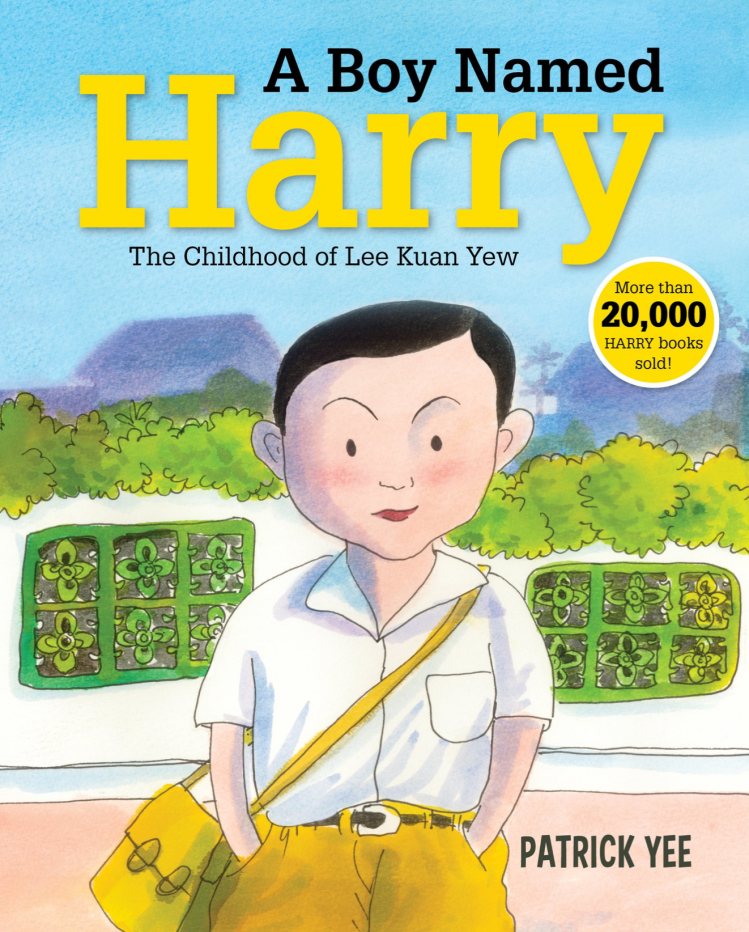give Library Aunty “the feels”
Panjang: the tall boy who became Prime Minister Pei Shing Huei; illustrated by Drewscape
The runaway who became President: S.R. Nathan’s journey of hope Amanda Kee; illustrated by Patrick Yee
I enjoyed these picture books about the lives of two former Prime Ministers and a former President of Singapore. Each gives children a glimpse of an earlier Singapore and a kind of childhood quite removed from their own. They remind readers that these revered men were once children who went to school, played games and were sometimes sad or got into trouble, like anyone else.
The simple language and good-sized, unfussy print accompanied by gently-coloured illustrations make these books technically easy for an early reader to read, but the value of these books lie in more than the language practice they offer. For kids to get the most out of them, it’s best that an older Singapore-grown adult reads with them, for it takes someone with lived experience of the time in the books to be able to pick out elements of historical or even domestic interest, and supply details that an observant and inquiring child might ask for.
The sepia overtones to all the illustrations in Panjang and The Runaway would likely evoke nostalgia even in a modern grandpa or extra-cool great-aunt. On almost every page, I encounter something I realise I want to explain to even my grown-up children. I want to point out the treadle sewing machine Panjang’s mother uses to make his school shorts – some kids may be fascinated to hear how it can work without being connected to a power point, and you could invert the whole machine and turn it into a tabletop when the sewing is done. I want to touch the wooden desks in Panjang’s classroom, with the telltale line near the top edge which show that these desks have lids that could be raised, under which there would be quite a deep storage space; something a kid today whose classroom desk is likely a grey plastic-topped affair might find quite cool. It may also take a while to describe the public bus that Nathan the future President takes to school, with its hard red upholstery, complete with a bus conductor armed with a sling pouch full of colour-coded tickets and a noisy ticket “clipper”, to whom you pay cash and who could even be expected to give you change. The kind lady who pays for Nathan is dressed in a floral print samfoo – a potential lead-up to discussion on cultural dress or the history of Singapore fashion.
These highly abridged and sanitised biographies can tug unexpectedly at heartstrings. The opening line from The Runaway did that for me:
“It was a quiet night but little Nathan could hardly keep still.”
Why can’t little Nathan keep still? Is it hard to get comfortable because he is lying on a wooden bed with no mattress but a straw mat? Is he cold, since he has no blanket over him? Or is he afraid, as he looks so small and alone, in a room lighted only by a single candle flame? It turns out that much worse things than being unsupervised at night are in store for Nathan. An alert child might ask later in the story how come Nathan’s father is dead so suddenly, after buying the family a wonderful crab lunch? This might need some careful handling, as quick googling would reveal that the depressed man committed suicide. For more mature readers, the teenaged Nathan’s wartime friendship with a Japanese soldier may be the basis of a sensitive discussion of historical context.
Poor Panjang! His over-long shorts and “auntie” glasses, his hunching, and even his working hard at his books when other kids are playing chapteh, soccer, climbing trees or catching spiders – speak of the loneliness of the awkward class nerd. I am glad that Panjang learns to walk tall, and grows up to be the second, and tallest Prime Minister of Singapore.
Harry, though obviously born in a much better-off family than Panjang and Nathan, still “didn’t have a lot of toys. He liked to play with spinning tops, marbles, kites – and even fighting fish!” This list of games recalls good times, but what I love is the economical summary of the next sentence:
“These games made him rather competitive; he always wanted to win.”
This competitive boy grows up to be the first Prime Minister of Singapore, leading the country in many firsts.
The text about Harry’s birth and his Chinese name (Kuan Yew as in “light and brightness”) is aptly matched by the bright and happy colours on this page. I like how the yellow on the wall picks up tints in his great grandfather’s formal portrait robes, and I really love how his mother, after delivering her first-born, is lying in bed properly dressed and neatly coiffed, though that’s not a point many non-aunties would appreciate!
Harry “wins” in this trio of biographical picture books, since he gets featured even in the other two books. He also has sequels: Harry grows up and Harry builds a nation. Where would Singapore be if Harry’s father had actually dropped him down the well, as he is pictured threatening to do on the first page!
However, I’ll admit I have a soft spot for Panjang. I am not alone, as Panjang: the tall boy who became Prime Minister was also shortlisted for the 2020 Hedwig Anuar Children’s Book Award.
Library Aunty verdict: Very readable trio of non-fiction picture books, suitable for ages 3-14, great resource for teaching Singapore history, biography as a genre and visual literacy, especially if supported by other relevant books and websites.
Related books for older students and adults:
Singapore NLB Overdrive links:
The Singapore Story: memoirs of Lee Kuan Yew, Volume 1
The Singapore story: memoirs of Lee Kuan Yew (Student edition)
Tall order: the Goh Chok Tong story, volume 1
An unexpected journey: path to presidency


